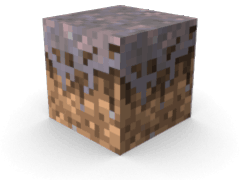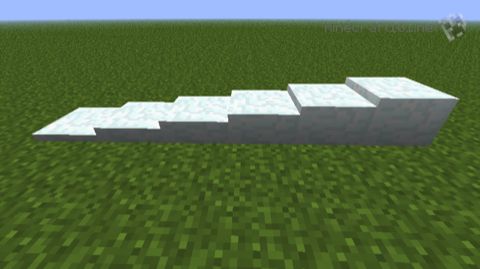Natural Blocks in Minecraft
These are the naturally-occurring blocks (other than stone) in the Minecraft world. Unless otherwise noted, a shovel is the best tool for mining any of these blocks.
Dirt and Grass

Dirt
There’s not much to say about dirt! Grass grows on it, and you need it to make farmland.

Grass
Grass is a special kind of dirt block. Grass blocks are only found where daylight can reach them. Grass will slowly spread from a grass block to neighbouring dirt blocks as long as there is enough light, and placing an opaque block on top of grass will turn it to dirt.
The colour of grass varies depending on the biome.
Grass blocks turn to dirt when you mine them, unless you use a tool enchanted with Silk Touch. Using Silk Touch you can collect grass blocks from the surface and plant them underground or in the Nether.
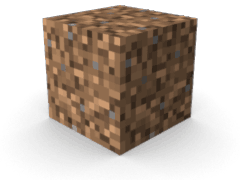
Coarse Dirt
Coarse Dirt is a special kind of dirt that wpn’t turn ont grass You can find this dirt in certain biomes, or it can be crafted from dirt and gravel.
Using a hoe on Coarse Dirt will turn it into normal Dirt.
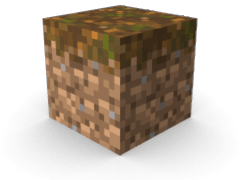
Podzol
Podzol is another specific type of dirt that is found in mega Taiga biomes. It is the kind of ground you find in pine forests: flowers and mushrooms will grow on it but it grass cannot spread to it.
Gravel and Sand
These two blocks are unique in Minecraft in that they obey gravity: if there is nothing underneath them, they will fall down. Be careful when mining near sand or gravel, as if it falls on you it can suffocate you.

Sand
Sand is a raw material for glass and TNT.
Sand is most commonly found in deserts and on beaches. Red sand can be found in mesa biomes.

Gravel
When you dig a gravel block, there is a chance that instead of getting gravel, you might get flint instead. Flint is useful for making arrows. With a Fortune III enchanted tool, every block of gravel you dig will turn to flint.
Sand and gravel are both useful for filling up lava pools to get rid of the lava.
You can also use them to get down from high places such as you often find in the Nether.
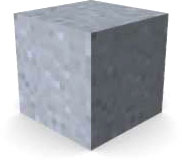
Clay
Clay is a versatile building material. It can be baked into Hardened Clay and coloured with Dyes, or turned into Bricks.
Find Clay in areas of shallow water in swamps or oceans, and read more about it here.
Snow and Ice
Snow
Snow can be found in cold climates. When you dig snow with a shovel, you get snowballs, which can be thrown. Snowballs can be crafted into snow blocks. Snow blocks can be crafted into snow layers, which can be placed on top of one another to create snow of any depth.
Ice
In cold biomes, water can turn to ice. Breaking an ice block will turn it back to water if there is something underneath it, otherwise it will just shatter. With a Silk Touch enchanted tool you can get ice blocks to place elsewhere. This is sometimes useful to inventors designing systems for moving items around.

Obsidian
Obsidian is a very hard substance ormed when water meets lava. It can only be mined with a diamond pickaxe, but it is essential or building enchantment tables and nether portals.

Wool
Wool comes from sheep, and can also be crafted from string. To get wool from a sheep, it’s best to use shears, but if you don’t have any you can get one block of wool by killing the poor thing.
Wool can be dyed all sorts of colours, using any of the dyes that can be made. Dyed wool is popular amongst artistic players of the game!
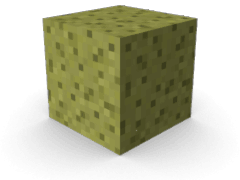
Sponge
Sponges are blocks that can be found in Ocean Monuments. When you place a Sponge block it will absorb any water next to it, up to a 5x5x5 volume.
This will convert the Sponge into a Wet Sponge, which cannot absorb any more water.
You can dry a Wet Sponge using a Furnace.

